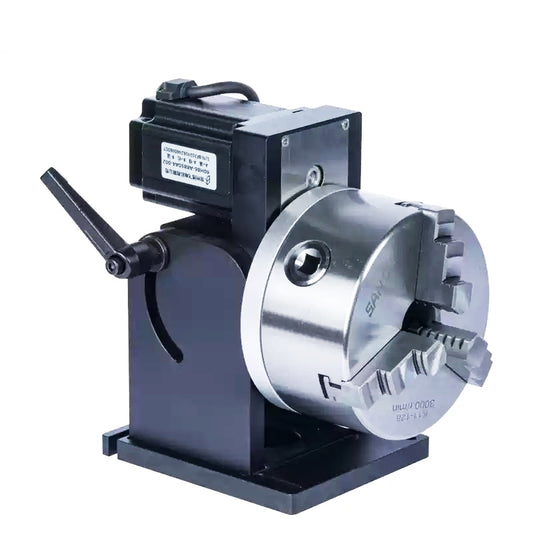Understanding Load Capacity in Welding Positioners
Share
When it comes to welding, precision and efficiency are paramount. Welding positioners are invaluable tools that help welders achieve consistent, high-quality results, but their effectiveness hinges on one critical factor: load capacity. In this article, we’ll explore why understanding load capacity is essential and why the 30-50kg range is particularly significant for many welding applications.
What is Load Capacity in Welding Positioners?
Load capacity refers to the maximum weight a welding positioner can safely hold and manipulate without compromising performance. This includes not just the weight of the workpiece but also any attached clamps, fixtures, or jigs. Exceeding the load capacity can lead to operational issues, reduced precision, or even equipment failure.
Positioners with a load capacity of 30-50kg are designed for small to medium-sized tasks, making them ideal for industries like automotive, aerospace, and custom fabrication. These models strike a perfect balance between versatility and precision, catering to a wide range of welding projects.
Why Load Capacity Matters
1. Ensures Stability and Precision
A positioner operating within its load capacity provides stable rotation and tilt, ensuring consistent welding angles. Stability is crucial for achieving defect-free welds, especially in precision applications like TIG welding or when working with thin materials.
When load capacity is exceeded, the positioner may wobble or strain under the weight, leading to uneven welds or alignment issues. Staying within the recommended range—such as 30-50kg—ensures optimal performance.
2. Protects Equipment Longevity
Overloading a welding positioner can cause undue stress on its mechanical components, including motors, gears, and bearings. This not only reduces the positioner’s lifespan but also increases maintenance costs. Choosing a positioner with an appropriate load capacity minimizes wear and tear, keeping your equipment in top shape for years.
3. Enhances Safety
Safety is a top priority in any welding operation. Overloading a positioner can lead to accidents, such as workpieces shifting or falling during welding. By adhering to the 30-50kg load capacity, operators can work with confidence, knowing their equipment is handling the weight securely.
4. Improves Workflow Efficiency
Using a positioner within its load capacity simplifies the welding process. Properly balanced workpieces rotate smoothly, allowing for seamless transitions between welds. This efficiency reduces downtime and increases overall productivity, especially in batch production or repetitive tasks.
Why 30-50kg capacity welding positioners are popular?
The 30-50kg load capacity range caters to a variety of welding needs without being overly specialized or restrictive. Here’s why it’s a popular choice:
Versatility: It’s suitable for welding pipes, tubes, small frames, and medium-sized components.
Portability: Positioners in this range are often compact and lightweight, making them easy to move and set up in different workspaces.
Cost-Effectiveness: They offer excellent functionality without the higher price tag of heavy-duty models designed for industrial-scale projects.
Precision Work: These positioners are ideal for applications requiring detailed and intricate welds, such as in aerospace or custom metalwork.






